On October 2nd, reddish yellow maple leaves, gently flowing steams and swans gliding over the water feature the delicate autumn scenery outside Diaoyutai State Guesthouse in Beijing. On the second day of Annual General Meeting, China Council for International Cooperation on Environment and Development (CCICED), forum centering on green “belt and road” and the 2030 Agenda for Sustainable Development was held in Beijing.
The forum was co-hosted by the two vice president of CCICED, Li Ganjie, head of environment ministry and Erik Solheim, executive director of United Nation Environment Programme, UNEP. Focusing on the theme, green “belt and road” and the 2030 Agenda for Sustainable Development, attendees deepened their communication and discussion. Invited again this year as observers, Dr. Zhou Jingfeng, Secretary-General of CBCGDF and his colleague introduced relevant works of CBCGDF to Messrs Li Ganjie and Erik Solheim.
Li Ganjie pointed out that the year of 2018 marks the fifth anniversary of the proposal of the Belt and Road Initiative. “Belt and Road” is not only a path of economic prosperity, but also of green development. President Xi Jinping has stressed many times that we must strengthen cooperation in environmental protection, act upon the green development concept and join hands to create green “Belt and Road” in ways to achieve 2030 sustainable development goals. That fully demonstrated the awareness of the community of shared future for mankind that requires all us to address difficulties together and share responsibilities.
In his speech (as you may refer to the video), Minister Li Ganjie expressed his appreciation to the brilliant speeches delivered in the forum, and the people’s engagement and contribution. He made a summary speech in which he shared the four following suggestions:
I. Belt and Road Initiative must follow the path of green development, or it might fail while green “Belt and Road” helps us to act upon 2030 Agenda for Green Development. Belt and Road Initiative creates more green public products for regions and countries alongside. In order to promote 2030 Agenda for Green Development effectively, we must ensure that its objective and direction go in line with the goals.
II. Joint participation in International Coalition for Green Development on the Belt and Road. We have cooperated with UNEP to promote the establishment of International Coalition for Green Development on the Belt and Road. It aims to facilitate the connectivity of green development strategies of the countries alongside and complement each other’s advantages in ways that boost regional common prosperity and sustainable development. In this connection, International Coalition for Green Development on the Belt and Road represents an ecological and environmental platform featuring extensive consultation, joint efforts and shared benefits. As far as I concerned, it is must be conducive to all related parties who joined the Belt and Road Initiative and all involved areas. Therefore, we are looking forward to wider engagement of our partners.
III Quick forming a synergy in building green Belt and Road. The green Belt and Road must be built through joint efforts of all parties, among which the government must take the responsibilities in guiding the rest to the right path, enterprises must as well take its shared duties, social organizations and the public must takes their part in engagement and supervision and other industries should put effort into coordination. Moreover, relevant financial institutions should provide a secure firewall. For instance, it is their responsibility to show appropriate investment direction to the public. Only in this way can Belt and Road ecological and environmental cooperation take its effect.
IV. The promotion of policy dialogues and standardized alignment. That means we must intensify our efforts in strengthening sustainable development goals and Belt and Road strategies and coordination of the countries alongside. Furthermore, we also need to work on planning Belt and Road project, financing guide and technical norms. In doing so, we will be able to jointly promote a greener cooperation in infrastructure, merchandize trade and financial service.
As the author observes, one of the most impressive point, brought up several times by various parties (especially heads of international NGOs), is a case telling that a primeval forest, home to Pongo tapanuliensis is threatened by a hydroelectric dams.
Furthermore, how to facilitate policy dialogues and standardized alignment of Belt and Road countries serves as one of the main topics of the forum.
In the forum, 150 representatives exchanged ideas on “synergistic effect of green Belt and Road and 2030 Agenda for Sustainable Development”, “the development of Belt and Road and green finance”, “’Belt and Road’ and green development partnership”, and furthered their discussion on “Belt and Road” Green Development International Union.

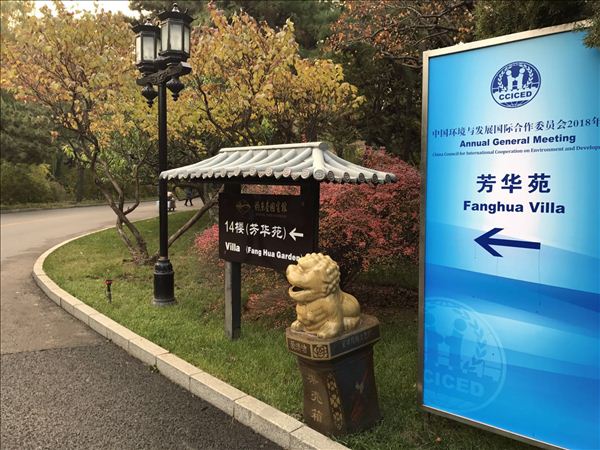
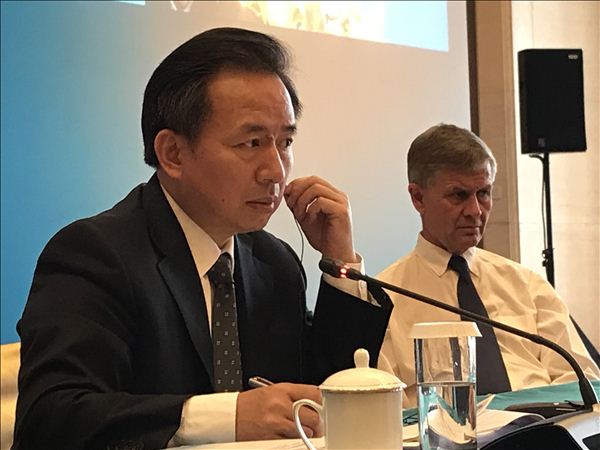
Environment minister Li Ganjie lends an ear to guests’ speeches on green “belt and road” and the 2030 Agenda for Sustainable Development, and takes notes carefully. Before the meeting, Dr. Zhou Jinfeng, Secretary- General of CBCGDF introduces recent progress made by CBCGDF regarding the theme.
https://v.qq.com/x/page/a0781bvrxc5.html
(The video captures a part of highlights of the forum themed by green “Belt and Road” and the 2030 Agenda for Sustainable Development and summary speeches delivered by Eric Solheim and Li Ganjie.)
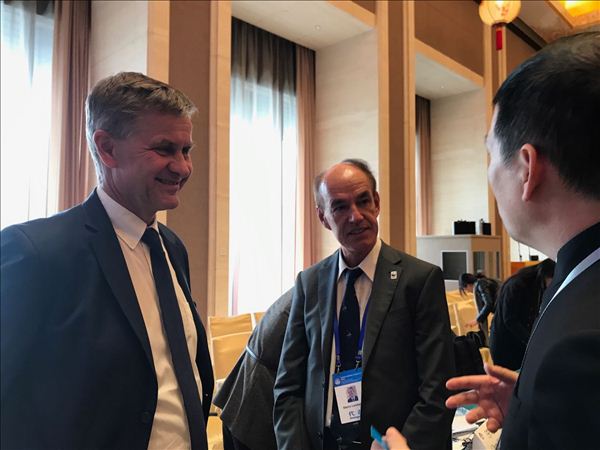
During the forum, Dr. Zhou Jinfeng, Secretary-General of CBCGDF introduces the relevant work and experiences regarding the environment-friendly Belt and Road to Erik Solheim, executive director of UNEP and Marco Lambertini, head of WWF.

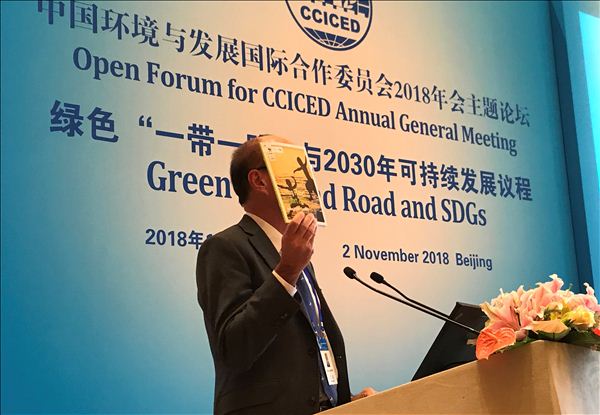
International NGO representative addresses at the forum.
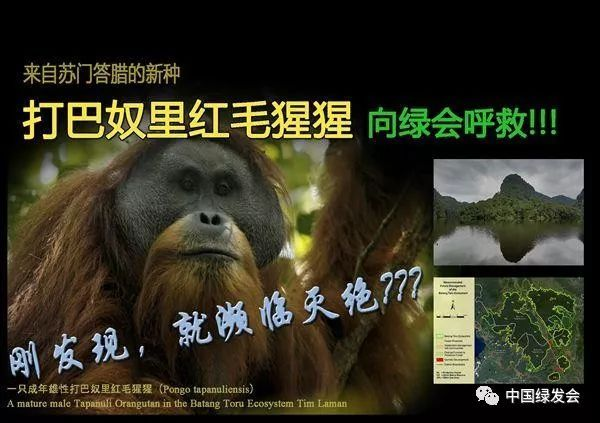
In the mid-November, 2017, CBCGDF received a letter asking for help from researchers of Pongo tapanuliensis and NGO. They hoped that CBCGDF could help them to contact financial investment companies of the project and render discreet assessment of biodiversity in this area. In the letter, it said that a huge dam was planned to build in the most densely area of Pongo tapanuliensis that functions as a key area of connectivity of those scattered species, prone to threats. Once the dam is established, the existence of this endangered creature will face great challenges.
(Photo: CBCGDF)
Original Chinese article:
http://www.cbcgdf.org/NewsShow/4854/6653.html
By / Liu lu
